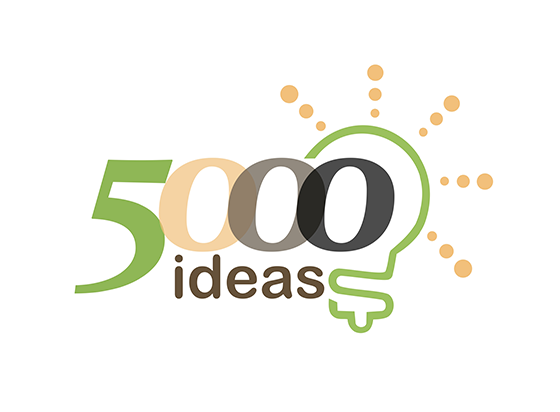by admin | May 27, 2019 9:00 pm | Recipes

2 c. light brown sugar
2 c. flour
3/4 c. shortening
1 egg
2 tsp. vanilla
1 c. hot coffee
1 tsp. soda
Mix sugar, flour, and shortening until lumpy. Do not mix until creamy. Take
out 1 cup for topping. Dissolve soda in hot coffee and add to the flour
mixture. Also, add egg and vanilla. Spread on sheet pan 9x12x2 inch and
sprinkle on topping.
This is a thin batter. Bake at 325-350 degrees approximately 30 minutes.
Sprinkle with powdered sugar after baking.

by admin | May 20, 2019 8:28 pm | Recipes
Alexander Espresso
Ingredients:
• 1 cup Cold water
• 2 tb Ground espresso coffee
• ½ Cinnamon stick (3″ long)
• 4 ts Crème de Cacao
• 2 ts Brandy
• 2 tb Whipping cream, chilled
• Grated semisweet chocolate to garnish
How To:
Break out your espresso machine for this one or just make really strong coffee with a small
amount of water. Break cinnamon stick into small pieces and add to hot espresso. Allow to
cool for 1 minute. Add crème de cacao and brandy, and stir gently. Pour into cute
demitasse cups. Whip the cream, and float some cream on top of each cup. For looks,
garnish with grated chocolate or fancy chocolate curls. Multiply proportions by six and it’s
perfect for a party. Serves 2

by admin | May 13, 2019 12:19 pm | Health
 It’s perfectly normal to feel anxious or depressed occasionally, especially in response to life’s stressors. However, when these feelings become prolonged, disproportionate or apparent for no significant reason, they need to be addressed.
It’s perfectly normal to feel anxious or depressed occasionally, especially in response to life’s stressors. However, when these feelings become prolonged, disproportionate or apparent for no significant reason, they need to be addressed.
Thankfully diagnosis and treatment methods have come a long way, with many public health campaigns working towards bringing mental illness ‘out of the shadows’.
The co-occurrence of anxiety and depression is a noted feature of these disorders. While behavioral and emotional symptoms may differ within the two, the fact remains they are both an unnatural and unwelcome state of mental health.
Characterized by a constant overwhelming state of fear or worry, anxiety can be debilitating in its physical manifestations too. The symptoms of depression may be similar to unrelenting feelings of sadness or despair.
The exact cause is still unclear; however, changes in brain chemistry, genetic factors, and hormone function are all believed to play a role. Irrespective of the cause, mental illness requires and generally responds to professional treatment.
Best Methods of Treating Anxiety and Depression
Our understanding of mental illness has evolved over time, yet it still presents certain difficulties. Diagnostically speaking, depression and anxiety primarily affect the way an individual thinks and feels, and in most cases subsequently behaves; therefore we generally rely upon patients to identify these changes themselves and seek help.
In some case, family members or close friends may be able to identify vulnerable individuals and assist in requesting attention. Once diagnosed, however, treatment can be quite successful using a variety of approaches; the most common of which are psychological therapies or ‘talking therapies’.
Such therapies are generally administered by a qualified psychologist and involve either behavior modification (Cognitive Behavior Therapy or CBT) or examination of intrapersonal and interpersonal patterns and behaviors.
Generally, work will be done to identify and address key triggers and ways of managing future events. Such therapies are often combined with a focus on improving nutrition and encouraging regular exercise, which itself can actively promote a healthy mental state.
Indeed, a safe and effective first step towards self-empowerment is taking control over one’s diet. The benefits are both psychological and physiological. Reducing or eliminating spikes caused by sugar-laden foods and stimulants, such as excess coffee, cigarettes, etc., will help in reducing the debilitating feelings associated with general anxiety.
Children and Adults Can be Affected
Young people and children, unfortunately, are just as vulnerable to mental illnesses such as anxiety and depression. While often harder to detect, once diagnosed, applied therapies specifically designed for children can usually assist the child in living a happier and more fulfilling childhood.
A happier childhood better prepares the child for dealing with the stresses of teen years and young adulthood. The healthy and safe transition of young adulthood enables the individual to prepare for and live a life feeling in control, empowered and able to deal with everyday challenges.
Finally, and hopefully, after exploring other options, the use of antidepressant medication may be required. This depends on the severity of the illness and is most often used in conjunction with psychotherapies. Antidepressants can be very effective in some situations. As in any medical case, treatment is ideally specifically tailored to suit the individual, based on a thorough study of the personal history of symptoms, responses, and environment.

by admin | May 6, 2019 2:00 pm | Health, Main, Meditation
Meditation has been practiced around the world for thousands of years. It is a technique used to quiet the mind and body, and release stress. It can also bring focus and clarity, and often, after meditating, problems that you have been struggling with, miraculously become solved. Meditation has also been known to inspire people to write, and to spur lucrative business ideas, as your subconscious comes to light.
One simple form of meditation requires you to sit in a quiet room, either on a pillow, or cross-legged on the floor, or in a comfortable chair, making sure your spine is straight. It is advised that you use the same place every day. It is also suggested that you personalize your spot, by beautifying it with candles, flowers, and pictures of the people that you love.
The idea is to sit quietly, with your eyes closed, and focus on a point inside of your forehead. Try not to think of anything in particular, but don’t try ‘not’ to think either, allowing your mind to become calm, and peaceful. If you find that your mind is ‘chattering’, don’t try to control it, just let it finish what it is that it is working on, it will eventually quiet down. It is also recommended for beginners to begin with ten to twenty-minute sessions, each day. After a while of doing this, you will start to feel deep relaxation and joy during these sessions.
The first step to this self-hypnosis is to sit in a quiet, comfortable spot, making sure you are facing a wall about eight feet away from you. Pick a spot or object on that wall, and make that spot or object your focal point. Looking at your focal point, begin counting backward from 100, one number for each breath you exhale. As you do this, imagine yourself floating, and feeling very relaxed. You will begin to feel your eyelids getting heavy, and may begin to blink. Let your eyes slowly close, and as you continue to count backward, imagine yourself as limp as a rag-doll, totally relaxed, and floating in a safe and comfortable place. Stop counting, and just float in your space. If any disturbing thoughts should come while in your space, just let them flow out again, and allow yourself to continue to feel safe and relaxed. This technique can help you to cope with stress, and discharge the tension that accumulates during stressful situations.
When you are ready to come out of this self-hypnosis, you can either let yourself drift off to sleep, or you can count from one to three and exit. First, count one, and get yourself ready to exit. At two, take a deep breath, and hold for a few seconds. At three, exhale and open your eyes slowly. As you open your eyes, continue to hold on to that relaxed and comfortable feeling.
You may then want to increase the length of your sessions to thirty minutes, or maybe even an hour. In our highly active lifestyles of today, it is imperative that we include a brief time for meditation in our daily schedule. For more self-help techniques and tips, please return to the main website.






Recent Comments